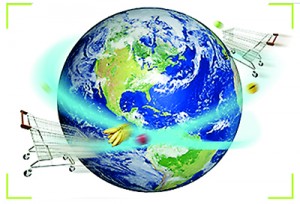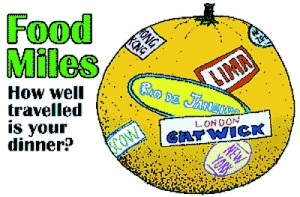Your food may not be as ‘Green’ as it looks
View(s): The global food production industry is undergoing rapid growth with the growing population and more people having access to food from external sources. The food industry will certainly keep growing even in the most adverse of human conditions, and in order to meet the global demand of food supplies the environment and biodiversity maybe compromised in this process.
The global food production industry is undergoing rapid growth with the growing population and more people having access to food from external sources. The food industry will certainly keep growing even in the most adverse of human conditions, and in order to meet the global demand of food supplies the environment and biodiversity maybe compromised in this process.
“How is it so?” you might think. Well, if you take a look at food supplies in the international market, they would sell a variety of fruits, vegetables and fresh produce often grown in an agriculture dependent nation and then shipped, or in the case of perishable goods, it is brought in to the country via air cargo. Then it is a matter of logistics and the produce arrives fresh at the local supermarkets or grocery stores. This adds up to a concept referred to as ‘food miles’: how many miles does your food travel to reach your plate. So it naturally follows that imported foods have more food miles on them, than those which are grown locally. The food may travel quite a bit to reach the consumer, but how does it relate to the environment. This process of the food travelling and adding ‘miles’ directly connects to the carbon emissions, the energy requirements are pretty high for tonnes and tonnes of food to be  transported over great distances: and fast. Then comes the packaging, the plastic or paper wrappers, bags, and labels that are eventually discarded and, along with other waste materials, that creates large unsightly landfills. This food is generally sourced from large scale farms that cannot risk the loss of crops and so in order to protect the crop from pests and ensure fast and maximum growth of the crop, it utilises a concoction of pesticides and fertilizers liberally sprayed or added to the soil. These excess chemicals get washed off and frequently enter water ways, thus impacting the quality of the water. The rapid expansion of monoculture farmlands, where the variety of crops is restricted, too has an impact on bio-diversity – especially if the farmlands expand in to forest or wilderness areas, where indigenous plants and bio-diversity is impacted by the destruction.
transported over great distances: and fast. Then comes the packaging, the plastic or paper wrappers, bags, and labels that are eventually discarded and, along with other waste materials, that creates large unsightly landfills. This food is generally sourced from large scale farms that cannot risk the loss of crops and so in order to protect the crop from pests and ensure fast and maximum growth of the crop, it utilises a concoction of pesticides and fertilizers liberally sprayed or added to the soil. These excess chemicals get washed off and frequently enter water ways, thus impacting the quality of the water. The rapid expansion of monoculture farmlands, where the variety of crops is restricted, too has an impact on bio-diversity – especially if the farmlands expand in to forest or wilderness areas, where indigenous plants and bio-diversity is impacted by the destruction.
Fortunately, in Sri Lanka many individuals still have access to locally produced foods, especially in suburban areas where garden grown fruits and vegetables are still found. Access to locally grown foods, does not only benefit the environment but supports a sustainable farming practice that ultimately aids in the growth and development of the local communities, essentially ensuring that the local producers too are able to find a market place for their goods at a fair price. The local communities are the key to preserving indigenous types of foods and biodiversity. The entire cycle in itself plays a large role in sustainable development of the environment and also sustainable human development. In order to be a success, environment practices must support and aid human development.
So the next time you have a plate of food before you, be conscious of the processes and environment impacts that it creates. This will help us all to make educated decisions when it comes to product choices.
Joanne Kotelawala (British Council International Climate Champion 2010, British Council Active Citizens Facilitator and Past President of Green Army of Spectrum Institute of Science and Technology).
| Do you have any comments/ideas/suggestions/pictures/writings you would like to share? Then send an email to savegreenwithet@gmail.com |
Follow @timesonlinelk
comments powered by Disqus





















